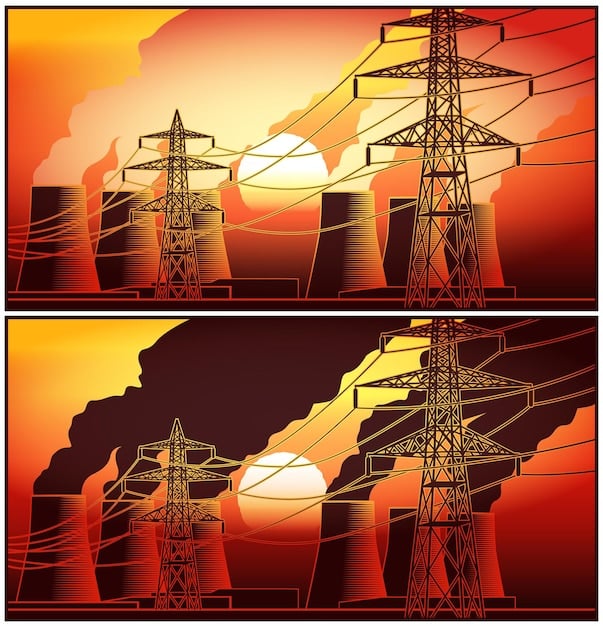Proof-of-Stake vs. Proof-of-Work: Energy Consumption in US

Proof-of-Stake (PoS) and Proof-of-Work (PoW) are consensus mechanisms used in blockchain technology, with PoS emerging as a more energy-efficient alternative to PoW, especially in the United States, due to its significantly lower electricity consumption.
The world of blockchain technology relies on consensus mechanisms to validate transactions and secure the network. Among these, Proof-of-Stake vs. Proof-of-Work: Analyzing the Energy Consumption of Different Blockchain Consensus Mechanisms in the US are two of the most prominent. Understanding their differences, especially concerning energy consumption within the United States, is crucial for the future of sustainable blockchain applications.
Understanding Proof-of-Work (PoW)
Proof-of-Work (PoW) is the original consensus mechanism, forming the backbone of Bitcoin and many other early cryptocurrencies. It relies on computational power to solve complex mathematical problems, securing the blockchain and verifying transactions.
How PoW Works
In PoW, miners compete to solve a cryptographic puzzle. The first to find the solution gets to add the next block to the blockchain and is rewarded with cryptocurrency.
PoW and Energy Consumption
The energy intensity of PoW is a significant concern. The computational power required means significant electricity consumption, leading to environmental concerns and debates about sustainability, especially within the energy-conscious landscape of the United States.
- High electricity usage due to mining hardware.
- Competition among miners drives up energy consumption.
- Environmental impact due to carbon footprint.
PoW, although foundational, presents a challenge in terms of environmental sustainability. The energy demands associated with this mechanism have led to increased scrutiny and the exploration of alternative consensus mechanisms.
Exploring Proof-of-Stake (PoS)
Proof-of-Stake (PoS) offers a different solution to the consensus problem, aiming to reduce the energy consumption associated with PoW. It replaces computational power with staked cryptocurrency as the basis for validating transactions.

How PoS Functions
In PoS, validators are chosen to create new blocks based on the amount of cryptocurrency they hold and are willing to “stake” as collateral. This eliminates the need for energy-intensive mining.
The Energy Efficiency of PoS
PoS is significantly more energy-efficient than PoW. By removing the need for massive computational power, PoS systems consume far less electricity, making them a more sustainable option for blockchain applications, aligning with the growing emphasis on green technology in the US.
- Validators stake their cryptocurrency instead of mining.
- Significantly lower electricity consumption.
- More environmentally friendly than PoW.
PoS represents a significant step towards greener blockchain technology. Its reduced energy footprint makes it an attractive alternative for projects looking to minimize their environmental impact.
Energy Consumption Comparison in the US
When comparing Proof-of-Stake vs. Proof-of-Work: Analyzing the Energy Consumption of Different Blockchain Consensus Mechanisms in the US, the difference in energy consumption is stark. This disparity has significant implications for the sustainability of blockchain technology within the United States.
Quantifying the Difference
Studies have shown that PoS systems can consume orders of magnitude less energy than PoW systems. This difference is mainly due to the lack of competitive mining in PoS.
Impact on the US Energy Grid
The widespread adoption of PoW systems could strain the US energy grid, while PoS systems offer a more sustainable alternative, potentially reducing the overall demand on electricity resources.

The adoption of PoS could lead to a reduction in the energy footprint of blockchain technology within the US. This shift would contribute to a more sustainable and environmentally responsible approach to blockchain applications.
Security Considerations
While energy consumption is a key differentiator between Proof-of-Stake vs. Proof-of-Work: Analyzing the Energy Consumption of Different Blockchain Consensus Mechanisms in the US, security considerations are equally important. Both mechanisms have different security models and potential vulnerabilities.
PoW Security
PoW security relies on the cost of attacking the network. An attacker would need to control a majority of the network’s computational power, making it economically infeasible.
PoS Security
PoS security depends on the cost of acquiring a majority of the staked cryptocurrency. While theoretically possible, it’s a different attack vector compared to PoW, and mechanisms exist to mitigate such risks.
- PoW security depends on computational power.
- PoS security relies on the value of staked cryptocurrency.
- Both mechanisms have potential vulnerabilities.
Both PoW and PoS present different security challenges, and the choice between them often involves a tradeoff between energy efficiency and security considerations.
Environmental Impact
The environmental impact of blockchain technology is directly related to the energy consumption of its consensus mechanism. Understanding this link is crucial for evaluating the sustainability of different blockchain solutions.
PoW and Carbon Footprint
The high energy consumption of PoW systems translates directly into a larger carbon footprint. This is a major concern, particularly in regions with a high reliance on fossil fuels for electricity generation.
PoS as a Sustainable Alternative
PoS systems offer a more sustainable alternative by significantly reducing energy consumption and, consequently, the carbon footprint of blockchain technology. This is increasingly important as the world moves towards a greener economy.
The reduced environmental impact of PoS makes it an attractive option for organizations and individuals seeking to minimize their ecological footprint. This is particularity important for blockchain application within the US where there is a growing regulatory focus on carbon emissions and environmental sustainability.
The Future of Consensus Mechanisms in the US
As the blockchain industry matures, the debate between Proof-of-Stake vs. Proof-of-Work: Analyzing the Energy Consumption of Different Blockchain Consensus Mechanisms in the US is likely to intensify. The future of consensus mechanisms in the United States will likely be shaped by factors such as regulatory pressure, technological advancements, and market demand for sustainable solutions.
Embracing Sustainable Solutions
There is a growing trend towards embracing sustainable blockchain solutions, with many new projects opting for PoS or other energy-efficient consensus mechanisms. This shift is driven by environmental concerns and a desire to align with broader sustainability goals.
Regulatory Considerations
Regulatory bodies may play a role in shaping the future of consensus mechanisms by implementing policies that favor energy-efficient solutions. This could incentivize the adoption of PoS and other sustainable approaches.
The choice of consensus mechanism will increasingly be influenced by a combination of technological, economic, and regulatory factors. The US market is well positioned to adopt and scale Proof-of-Stake technologies for its blockchain applications.
| Key Aspect | Brief Description |
|---|---|
| 💡 PoW Energy Use | High energy consumption due to mining. |
| 🌱 PoS Efficiency | Significantly lower energy consumption than PoW. |
| 🔒 Security | PoW depends on computational power; PoS on stake value. |
| 🌎 Environmental Impact | PoS offers a smaller carbon footprint. |
Frequently Asked Questions
▼
Proof-of-Work is a consensus mechanism where miners compete to solve complex puzzles, validating transactions and securing the blockchain. The first to solve the puzzle adds the next block. It is used on the Bitcoin blockchain
▼
PoS eliminates the need for energy-intensive mining by using validators who stake their cryptocurrency to create new blocks. This reduces electricity consumption significantly for block generation and network operation.
▼
High energy consumption, especially in PoW, leads to a larger carbon footprint and environmental concerns. Lowering energy usage makes blockchain technology more sustainable for United States businesses and regulations.
▼
Both PoW and PoS have their unique security models and potential vulnerabilities. PoW relies on computational power, while PoS depends on the value of staked cryptocurrency for network security.
▼
The future likely involves a shift towards more sustainable solutions like PoS, driven by regulatory incentives, technological advancements, and market demand for green blockchain applications within the United States.
Conclusion
In conclusion, the analysis of Proof-of-Stake vs. Proof-of-Work: Analyzing the Energy Consumption of Different Blockchain Consensus Mechanisms in the US reveals that PoS offers a more sustainable path forward. While both PoW and PoS have their merits and trade-offs, the urgency of addressing environmental concerns underscores the importance of embracing energy-efficient solutions like PoS for the future of blockchain technology in the United States, while accounting for security considerations





